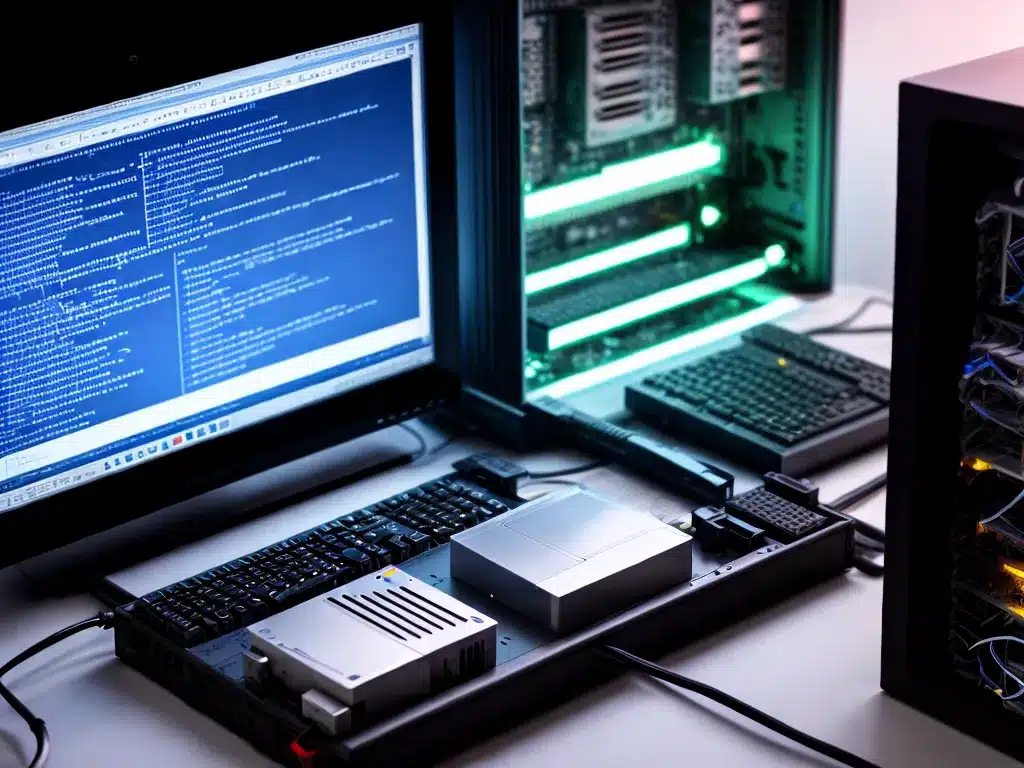
Determining whether your computer issues are caused by hardware problems or software problems can be tricky. However, there are some steps you can take to narrow down the likely cause and fix the issues. Here is a guide on how to determine if your computer problems are hardware or software related:
Identifying Hardware vs. Software Issues
Hardware issues are problems with the physical components of your computer. This includes parts like the motherboard, CPU, RAM, hard drive, graphics card, power supply, etc. Symptoms of hardware problems can include:
- Computer freezing, crashing or displaying blue screens
- Odd noises like grinding or beeping coming from the computer
- Computer overheating and randomly shutting down
- Issues powering on the computer or devices not being recognized
Software issues relate to problems with the programs, operating system, drivers and other code running on your machine. Common software issues include:
- Apps freezing, crashing or running slowly
- Strange error messages appearing
- Programs failing to open or install correctly
- Computer booting slowly or failing to start up
Hardware problems will persist regardless of the software environment. However, software issues may be specific to certain applications or configurations.
Steps to Diagnose the Cause
Follow these steps to determine if your computer’s issues are hardware or software related:
1. Note error messages and symptoms
When a problem occurs, note the exact error message and sequence of events. This information can help identify trends and point to a specific culprit.
2. Update all software, drivers and the OS
Many issues are caused by outdated software that contains bugs. Update everything to eliminate this as a factor.
3. Test with a bootable USB or external drive
Boot into a different OS like Linux from a USB drive. If issues persist, it points to a hardware problem.
4. Run diagnostic software
Use built-in utilities like Windows Memory Diagnostic to scan for defects with your hardware.
5. Listen for odd noises
Unusual beeps or grinding noises can indicate a failing hardware component.
6. Check temperatures
Overheating can cause freezes, crashes and shutdowns. Monitor your computer’s temperatures.
7. Reseat components and clean internally
Open up your PC and reseat components like the RAM and cables. Clean out any dust.
8. Test hardware individually
Remove extra RAM, GPUs, drives etc. and test them one by one to isolate problems.
9. Replace parts
If you can’t pinpoint the issue, start replacing parts like the RAM or power supply to see if problems persist.
When to Seek Professional Help
If you’ve tried all the basic steps and are still experiencing issues, it may be time to take your computer to a repair shop. PC technicians have extra diagnostic tools and the expertise to locate faulty hardware that is difficult to find yourself.
Getting professional help can save you time and prevent you from needlessly replacing working parts. However, be prepared that hardware repairs and replacements can get expensive. In some cases, the cost may outweigh the value of an older machine.
By methodically testing and troubleshooting your computer’s issues, you should be able to determine whether faulty hardware or buggy software is the root cause. Taking quick action can help restore normal operation and prevent cascading failures down the line. Just be prepared that resolving hardware issues may require opening up your PC and replacing parts.












